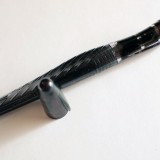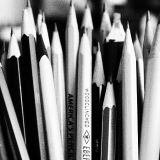Podcasting 101 : Part 5 – Adding Music and Editing Using Audacity
One thing that can really “punch up” the sound of your podcast is a soundtrack. However, don’t start flipping through your CDs just yet! Commercial music can be very, VERY expensive to license for podcast use — if the labels will deal with you at all. Using music from your own collection without a license can get you sued, which at the minimum is a big hassle and may end up costing a lot of money.
Fortunately, musicians know that the labels are all screwed up in the way they handle licensing. For many musicians, the publicity they could get from their songs being played on a podcast far outweighs the couple of dollars they might make from a licensing deal. So they’ve created a new category of music licensed especially for use in podcasts, called “podsafe music”.
There are several places on the Internet where you can download music to use in your podcast. Podshow’s Podsafe Music Network and Podsafe Audio are good sources with thousands of choices, arranged by genre, and artist. In most cases they ask only that you mention the artist, title, and the source of the song; some sites and artists ask that you let them know where they can find their songs being used, which seems like a nice thing to do in any case.
You could also record your own music, if you’re at all musically inclined. Either way, adding music to your podcast is fairly simple, using multi-track software like the free, open source program Audacity. What you’ll do is record the music and voice as two separate tracks. To do this, drag the song’s file into the Audacity window. The program will process for a moment and then a new track will appear with a waveform image of the song (showing the relative volume of each moment of the song).
Once the song is in place, you can crop it down to just the parts you want to use (highlight the part you want to keep and select “Edit > Trim” from the top menu). Then create a new track (“Project > New Audio Track”) and record the spoken part of your podcast (using the big “Record” button at the top — it’s the circular button with the red dot in it).
When you’ve recorded your spoken parts, select the “Time Shift Tool” — it’s the button at the top left that looks like a two-headed arrow) and you can click-and-drag your music to where you want it to appear — under your voice, maybe, or at the end of the show, or in a break. If you want more than one selection of music, you can keep adding new tracks by dragging in audio files, trimming them, and dragging them into place.
To make it sound really nice, you can adjust the volume of each track separately — there is a control (marked only “-” at one end and “+” at the other) on the left-hand end of each track. You can also add fade-ins and fade-outs, which are especially useful for the music that ends the show — click the button at the top-left with the icon that looks like an “I”, highlight the piece of music you want to add a fade-out to (or just the last 10 seconds or so), and select “Effect > Fade Out” from the top menu. To do a fade-in, do exactly the same thing but select “Effect > Fade-In” instead.
You can also cut parts you don’t like; just highlight them and select “Cut” from the “edit” menu. If you’re really patient, you can go through and edit out coughs, sneezes, and the inevitable “umms” and “uhhs” that creep in — you have to zoom in (using the button that looks like a magnifying glass) and listen carefully for the start and end of the piece you want to silence — highlight it and select “Generate > Silence” from the top menu.
Audacity has tons of features that are used by professional musicians to make their work sound better; you can play with it for a long time, discovering new effects and developing a cleaner, more polished sound. But the basics here are pretty much enough — as I said at the start of this series, people don’t seem to care all that much about the sound quality of podcasts, as long as it’s clear — what matters is what you have to say. For now, at least, people are very forgiving about podcasts, and a little bit of roughness around the edges seems to be reassuring. We listen to podcasts to hear ordinary people talk about their lives and passions; when we want slick, highly produced voices, we turn to professional radio.






Dustin,
A good source of low-cost music tracks is audiojungle.net. Good series on podcasting.
Dustin, I’m a musician [full-time during the spurts of periods when my band has reunion tours], and I’ve never heard of these sources of music for podcasts. Very interesting — will investigate.
Tom